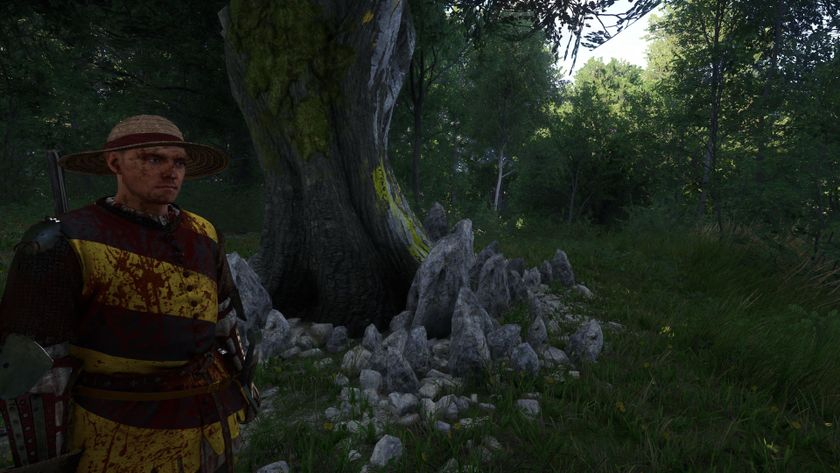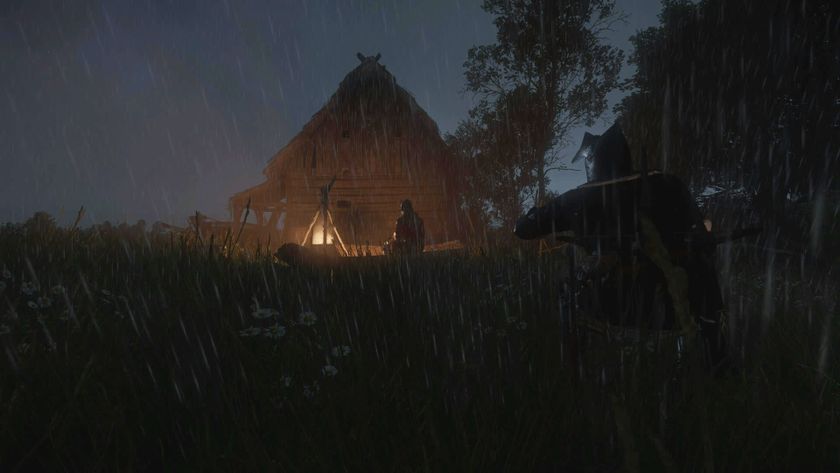
If I had a nickel for each time a Bethesda-owned RPG sent me bouncing around a handful of close-knit settlements before sending me to the other side of the map, I'd have two nickels. Skyrim's journey to Riften and Fallout: New Vegas' hike from Nipton to its titular city remain, to my mind, significant parts of how these two games were able to gain such an enduring hold on the genre. Now, playing Dragon's Dogma 2 more than a decade later, I'm finding the same expeditionary design philosophy that made me fall in love with those fleeting moments written throughout the whole game.
New Vegas was the first Fallout game I ever played, and I squeezed everything I could into that first playthrough. No inch of the Mojave went unscoured, no DLC went unplayed. The obvious follow-up, of course, was Fallout 3 - a game in which I ended up with less than a fifth of the playtime of its Obsidian-made successor. But that meager 18 hours belies my fondness for Fallout 3, moments of which stick just as clear in my mind as those from New Vegas; the flight from Vault 101; Tranquility Lane; laying traps for Super Mutants in the bowels of the museums. So why did I spend so much more time in the Mojave than in the Capitol?
The answer to that lies in each game's critical path. In Fallout 3, Bethesda holds your hand pretty hard as it sends you through the suburbs and subways of D.C., bouncing you from objective to objective across a relatively small swathe of its map for most of the main quest. In New Vegas, Obsidian took a different approach – you'd undertake a few short journeys around Goodsprings, but then the training wheels would come off, the next main quest objective firmly on the other side of the map, all of the danger and promise of the Mojave between you and your goal. Skyrim would follow suit, sending you on the long hike between Whiterun and Riften. Those grand journeys opened up those worlds, encouraging organic exploration rather than the slavish following of the next quest marker. And that's exactly what Dragon's Dogma 2's entire world is built around.
The road less fast-traveled

Dragon's Dogma director Hideaki Itsuno has made his thoughts about fast-travel abundantly clear - you only need to skip from place to place if your game world isn't exciting enough to warrant making the journey yourself. There are means by which you can get around faster than simply travelling on foot, but the friction remains: if you want to take an oxcart, you'll have to wait for it to arrive and potentially protect it from ambushes; you can jump to a specific spot, but it'll cost Ferrystones and Portcrystals to do so.
The question that jumps out to me so far, however, is why would you want to? Itsuno has also made clear that Dragon's Dogma 2 was his opportunity to build on the freedom that he wanted to include in the original game. Towering enemies can and will follow you to the ends of the earth should you stumble across their path, but roaming NPCs will fight at your side. Pawns will encourage you off the beaten track with the promise of rewards to be found in the next cave, mountain, or forest glade. Clever use of spells and abilities turns simple traversal into progression-based puzzles. It feels good to explore and roam around, so I never feel the desire to fast travel in the first place.
An Unexpected Journey

The highlight of my pre-release Dragon's Dogma 2 preview was a fight against three golems and a griffin. The free-form nature of this world meant that I stumbled on one golem, then another, then another. The Griffin was a later arrival, though it did swoop in to do some serious damage to my Pawns before it was dispatched. In total, this fight took 18 hours as it ranged across the foothills outside a nearby city, and it's an experience that I'm still looking to capture with the main game. It's also one that never would have happened if I'd merely jumped towards my nearest objective – only by being encouraged to explore the world on foot did I bump into the golem that kicked off this brawl.
Skyrim and New Vegas understood that same idea. It's clear Itsuno has been happier to offer the player a level of friction that Bethesda and Obsidian eventually shied away from. But both games understood that if they wanted players to truly appreciate their RPG worlds and not just the 'chosen one' stories at their hearts, they needed to show those players what those worlds were really like when they stepped off the beaten path. The best way to do that is to force them on a journey so long that there's no chance they'd remain on any kind of intended route. 10 years later, I don't really remember what happened on my journeys to Riften or New Vegas beyond a few snapshots, but I do know that by the time I arrived in each place, I was invested enough in each of those worlds that I wanted to explore them in their entirety. In Dragon's Dogma 2, Itsuno takes that idea and makes it a successful part of not just one important journey, but almost every journey, ensuring that Vermund and Battahl offer the same draw as Skyrim and the Mojave.
Sign up to the 12DOVE Newsletter
Weekly digests, tales from the communities you love, and more
Get a closer look with our Dragon's Dogma 2 review.

I'm GamesRadar's news editor, working with the team to deliver breaking news from across the industry. I started my journalistic career while getting my degree in English Literature at the University of Warwick, where I also worked as Games Editor on the student newspaper, The Boar. Since then, I've run the news sections at PCGamesN and Kotaku UK, and also regularly contributed to PC Gamer. As you might be able to tell, PC is my platform of choice, so you can regularly find me playing League of Legends or Steam's latest indie hit.

Kingdom Come: Deliverance 2 has turned me into a Bohemian Batman who murders bandits in their sleep, and it's all because of some dead sheep

Kingdom Come: Deliverance 2 devs chased down a 600-year-old star map for the sake of historical accuracy and immersion, and it should "be useful for Hardcore Mode"
Most Popular



